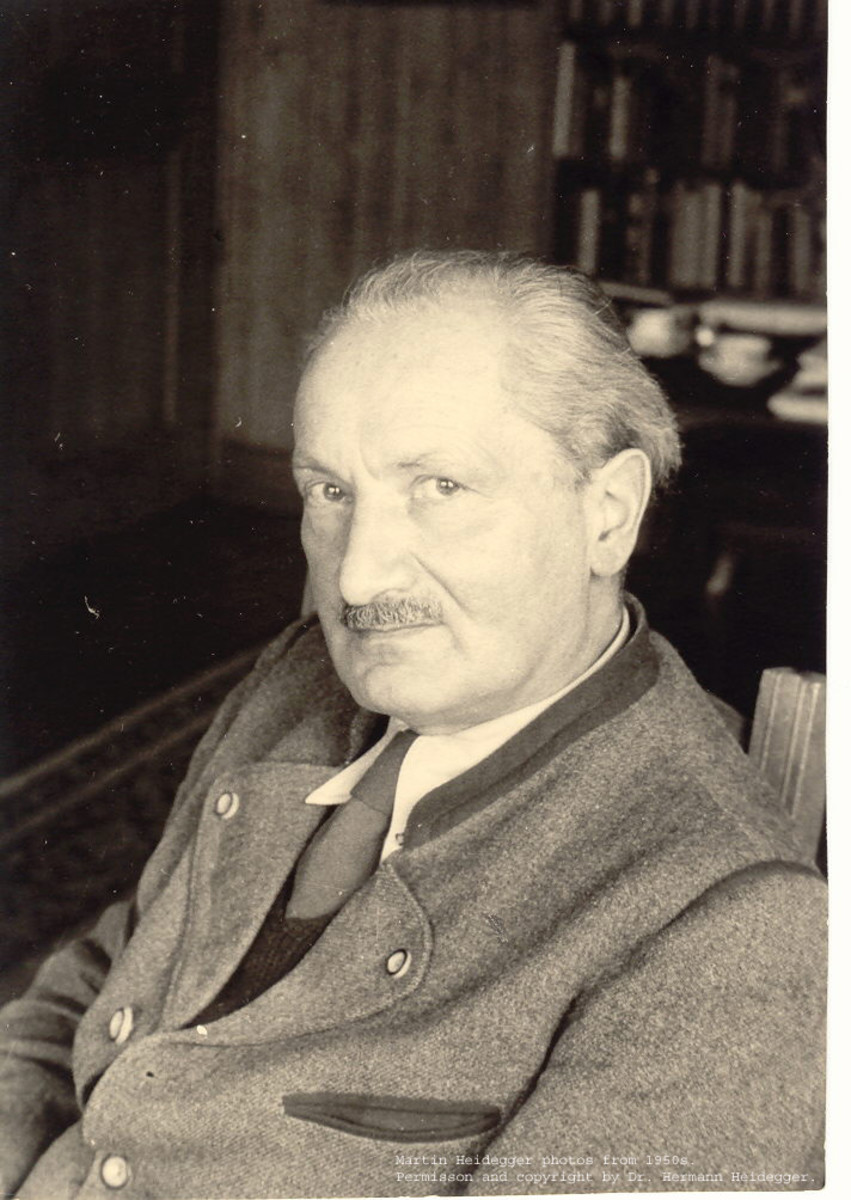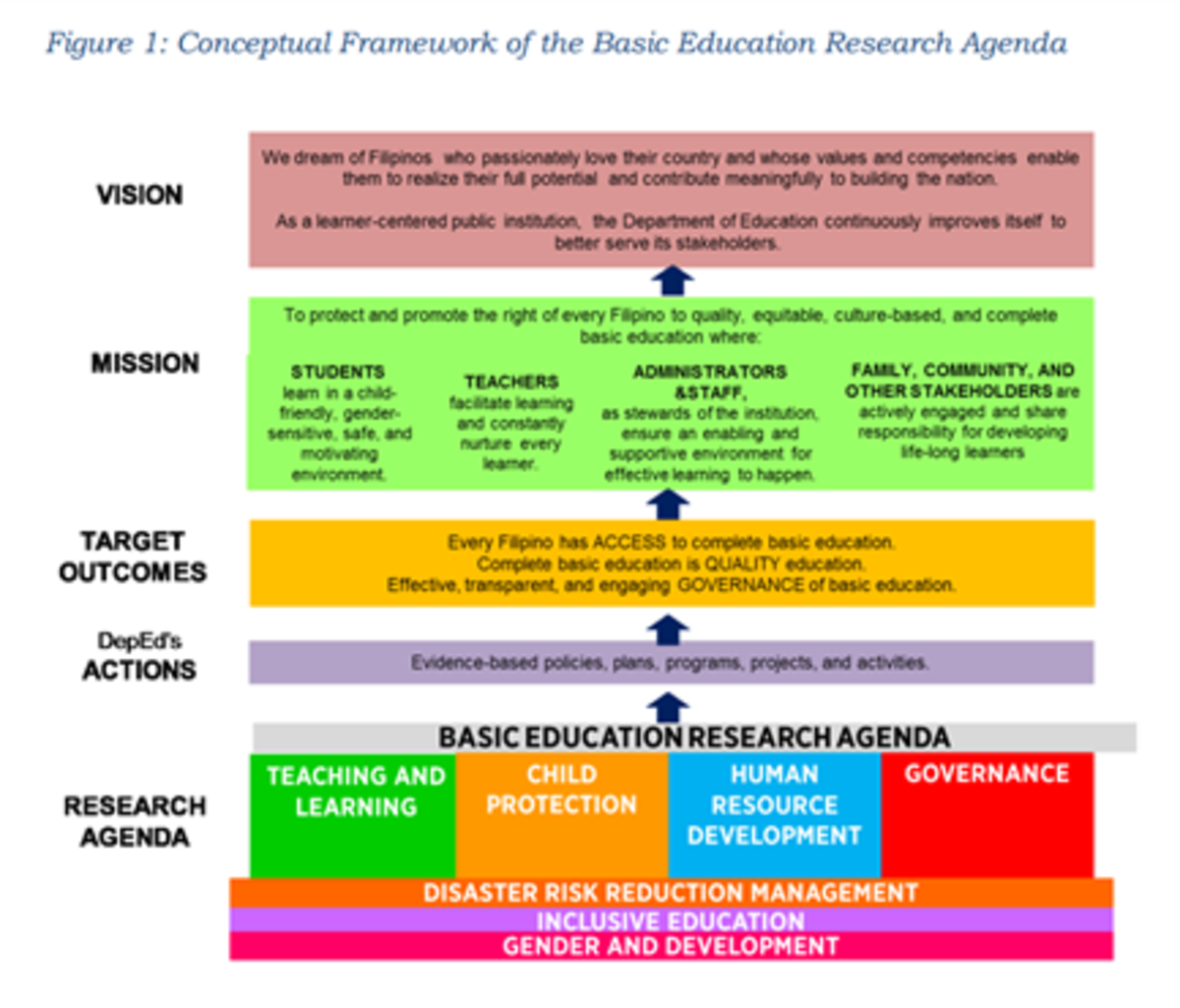A Relational Approach to Understanding
There are many ways that we try to understand the world we live in: we analyze, dissect, perform tests, conduct studies, observe, and so on. These are some of the methods of science that are seemingly highly prized in our “modern” era. However, in our effort to gain a more thorough and complete understanding of our world, something is lost in the scientific analysis. Our method for achieving knowledge and understanding is incomplete so long as we only seek objective facts of scientific certainty. In our scientific approach we overlook a more basic way of understanding things. This alternative approach to understanding involves coming to know our world through the relations we have with our surroundings; it involves understanding things on their own terms. In this essay I argue that the modern, scientific approach to understanding is lacking, and that a more inclusive way of understanding our world can be found through a relational approach. In order to develop this argument, I will rely on the writings of Martin Heidegger, particularly focusing on Heidegger’s notion of “truth as freedom.” With an understanding of how freedom is the essence of truth, I will attempt to show how the relational view can offer us a new way of understanding our world.
Generally speaking, we as a society seem to place a high value on the objective methods of science. We value science as a way of understanding our world, because through science, things are studied in an unbiased, impartial, and objective way. Underlying this scientific approach is the belief that the more closely we analyze something, the better we will understand it. For example, in chemistry, we break down substances into their most basic elements in order to gain a deeper understanding of their chemical make-up. In biology, we gather different specimens and dissect them in order to understand various aspects of their physiology. We do similar sorts of dissection or analysis in other fields of science, too. Not only is it important to note that these scientific experiments are conducted in an objective and unbiased way, but the facts found in one lab will be the same facts discovered in every lab around the world; hence, the scientific approach to understanding is thought to be a way of achieving universal truths. As a result of this fascination with science and its objective methods of achieving universal truths, we tend to devalue, or even overlook, other approaches to understanding our world. But I think that something important is lost if we only focus on an objective, scientific approach to understanding our world. Here I will argue for the importance of a relational view.
So what do I mean by a relational approach to understanding? The relational approach is simply a way of understanding our world through the close relationships we have with certain things. Through a relational approach to understanding we gain a type of knowledge, or awareness, about those ‘beings’ we encounter in our everyday experiences. Such beings can include anything from a pair of shoes, to things found in nature, such as a mountain range, or a favourite hiking trail. The relational approach to understanding will become clearer as we progress. First, I think it will be helpful to provide the philosophical underpinnings of the relational view.
At the centre of the relational view that I am putting forward is Heidegger’s notion of “truth as freedom.” In “On the Essence of Truth,” Heidegger argues that the essence of truth is freedom, and that in order for us to attain truth about a ‘being’ we must ‘let beings be’ (p. 125). But what does it mean to “let beings be’ and how is it that freedom is the essence of truth? When Heidegger says that we need to ‘let beings be’ in order to know their true nature, immediately one would think that Heidegger is urging us not to interfere, or interact with a being if we want to understand it. But how could we learn anything about a being if we do not study it closely, dissect it, see what it is made of, etc? Indeed, to ‘let beings be’ would seem to be completely contradictory to our modern scientific approach to understanding. However, when Heidegger urges us to ‘let beings be’ he does not intend to imply that we ought not to interact with them. So then how do we let beings be? As Heidegger points out, “[f]reedom for what is opened up in an open region lets beings be the beings they are” (p. 125). This “open region” would still seem to imply some sort of freedom from interference, or interaction, but, as Heidegger later says “…to let beings be as the beings which they are – means to engage oneself with the open region and its openness into which every being comes to stand, bringing that openness, as it were, along with itself” (p. 125). Hence it is clear that we need not avoid interaction with beings in order to understand them, but rather just the opposite: we need to engage ourselves with them in order to know them. But it is still unclear how truth is revealed by engaging one’s self with beings, and it is also unclear what Heidegger means by an open region.
I think the best way to proceed from here is to provide an example of what it would mean to ‘let beings be.’ I think that by providing the right type of example, I can achieve several of my objectives at once. Through the following example, not only will I attempt to explain Heidegger’s notion of “truth as freedom,” but I also think I can help clarify the distinction I wish to draw between the scientific view and the relational view.
Suppose, for example, we want to gain an understanding about a particular landscape. On the scientific approach, we might start by describing certain characteristics of the landscape. First, we might be inclined to give its latitude and longitude. We could then go on to give various facts about the landscape that might include its average amount of rainfall, seasonal temperature ranges, the chemical make-up of the soil, and so on. We could then describe the type of trees, rocks, and wildlife to be found in the area, as well as every other empirical fact that could possibly be discovered. All these facts about this landscape will be universally true; that is, these facts will be true for every scientist, in every part of the world if they were to study this particular landscape. These facts are universally true because they are empirically verifiable, and are collected in an unbiased, objective manner. Hence, through this unbiased, objective approach to understanding, the scientist thinks she can provide a true account of this landscape. She believes she has the ability to capture all of the relevant facts about this landscape simply by applying her scientific methods of investigation. However, I would argue that if we only appeal to a scientific account of an object (in this case, a landscape), something important would be missing from our analysis. In order to see what is missing from the scientific account, let us consider a relational understanding of an encounter with a landscape. This particular account involves a rock climber recalling her thoughts as she clings to the side of a mountain:
…[I] took a deep cleansing breath. I looked all around me – really looked – and listened. I heard a cacophony of voices – birds, trickles of water on the rock before me, waves lapping against the rocks below. I closed my eyes and began to feel the rock with my hands – the cracks and crannies, the raised lichen and mosses, the almost imperceptible nubs that might provide a resting place for my fingers and toes when I began to climb. At that moment I was bathed in serenity. I began to talk to the rock in an almost inaudible, child-like way, as if the rock were my friend. I felt an overwhelming sense of gratitude for what it offered me – a chance to know myself and the rock differently, to appreciate unforeseen miracles like the tiny flowers growing in the even tinier cracks in the rock’s surface, and to come to know a sense of being in relationship with the natural environment (Warren, pp239-240).
This account of rock climbing captures a significant part of the relational view of understanding that I want to outline in this paper, and I think it also describes a number of points that Heidegger makes. First, I want to comment on the Heideggarian notions that are raised by this passage, and then I will discuss the relational aspects.
In the passage above, we see that the climber stops and listens for a moment. When she takes this pause, she ceases to see the rock as some mere object to be conquered. When the climber no longer imposes her will onto the rock by trying to turn it into something to be used for her purposes, the rock is allowed to present itself as itself. When the rock is allowed to present itself as itself, I think it then exists in an “open region.” The rock can be itself only when there are no outside purposes imposed on it; it can only be its true self when it has been given the freedom to do so. But as we have seen, it is not the case that the climber needs to abandon, or cease to interact with the rock, in order for the rock’s ‘beingness’ to be revealed, rather, it is only through engaging one’s self in a close relationship with the rock that the true rock is allowed to reveal itself. Hence, we see that the climber has ‘let beings be’ by engaging with the rock. By engaging with the rock, the ‘beingness’ of the rock has been revealed, and the climber has come to understand the rock in a new way. This engagement with the rock is part of what I call having a relational understanding of a ‘being.’
I said earlier that the relational approach to understanding relies on a way of understanding our world through the close relationships we have with ‘beings;’ that through a relational approach to understanding we gain an awareness, or an understanding, about things that we would not have noticed otherwise. We see that through the above account of rock climbing, the climber has come to understand the rock in a new way. She no longer sees the rock as an object suited for her purposes of rock climbing; rather she develops an intimate relationship with the rock and comes to understand the rock differently, simply by letting the rock just ‘be.’ Indeed, as the author later says, “I felt myself caring for this rock and feeling thankful that climbing provided the opportunity for me to know it and myself in this new way” (p. 240). Hence, we are beginning to see the type of understanding that the relational approach can provide us with, but I will continue to clarify this view below.
The last point I want to make about this rock climbing account is that the climber gained a deeper understanding about this rock cliff than could have been gained through a scientific analysis of the landscape. On a scientific approach, the ‘beingness’ of the rock would have been concealed because we would try to understand the rock, not on its own terms, but on our terms: as a scientist, we would have specific goals in mind when we study the rock. We would want to focus on specific aspects of the rock that accorded with our purposes. For example, we would want to determine its exact height and width, the type of rock that it was, its precise geographical location, and so on. But the scientific approach to understanding is lacking because it fails to ‘let beings be;’ it does not engage in ‘beingness’ (See Heidegger, pp. 58, 64.) Hence we see that a relational understanding of our environment can provide us with a different account of beings than the scientific account. By developing a relationship with the rock, the rock was allowed to be itself, rather than the rock we wanted it to be (i.e., a rock for climbing, or a rock for scientific study).
This rock climbing account has taken us some distance to understanding the relational approach I am outlining here; however, there is a deeper sense of “relations” that I want to uncover. In order to see this deeper meaning of the relational view, I want to again, appeal to Heidegger’s writings. In order to clarify the relational approach, I need to introduce Heidegger’s notion of ‘equipment.’
Throughout much of Heidegger’s work, we see the use of the term ‘equipment.’ In Heidegger’s words, ‘equipment’ is simply a term used to describe “…those entities which we encounter in concern…” (p. 97). By “concern,” Heidegger means those objects that are closest to us; those objects that we make use of everyday (p. 98). So, for example, we might think of ‘equipment’ as the hammer that is used by the carpenter, the wrench used by the mechanic, the rolling pin used by the baker, or any other sort of thing a person makes use of, or encounters, in their daily lives. For our purposes, the most important thing to point out about equipment is that it is best understood when it is put to use. As Heidegger says, “…the less we just stare at the hammer…and the more we seize hold of it and use it, the more primordial does our relationship to it become, and the more unveiledly is it encountered as that which it is – as equipment” (p. 98). So we see that by using equipment, we gain a certain type of understanding about that equipment. So, for example, we might have good reason to think that the carpenter is going to have a deeper understanding of her hammer simply because she uses it on a daily basis: she is used to the weight of it in her hands, the amount of force needed to drive the nail into the wood, the smooth texture of its grip, and so on. Hence, through this relationship with the hammer, the carpenter knows the hammer on a deeper level than would someone who is simply looking at the hammer, or even studying the hammer closely. It should now be getting clearer how this notion of ‘equipment’ is important to understanding the relational approach that I am putting forward here, but let us continue with this discussion to highlight a few more points of interest.
If we take Heidegger’s notion of ‘equipment’ and apply it to our relational approach to understanding, we see that simply through our daily use of items – our relationship with items – we come to see that more is unveiled about a ‘being’ the more we put it to use, the more we interact with it, the more of a relationship we develop with it. As Heidegger says, “…when we deal with [pieces of equipment] by using them and manipulating them, this activity is not a blind one; it has its own kind of sight…” (p. 98). This “kind of sight” that Heidegger is talking about is similar to the relational approach to understanding. The relational approach offers a way of knowing things, or seeing things in a different way: it is a way of knowing things by putting those things to work; through this use of things, one becomes closer to the true nature of the equipment.
But there is something that is important to understand about Heidegger’s notion of equipment, and that is that we must not look for, or try to discover, the ‘beingness’ (or as Heidegger says, the ‘equipmentality’) of equipment, we must simply let it present itself as itself; much like Heidegger said earlier about ‘letting beings be,’ and engaging them in an “open region.” Heidegger highlights the importance of this ‘letting be’ in the following example from “The Origin of the Work of Art.” Here, Heidegger discusses a pair of shoes worn by a peasant women:
The peasant woman wears her shoes in the field. Only here are they what they are. They are all the more genuinely so, the less the peasant women thinks about the shoes while she is at work, or looks at them, or is even aware of them. She stands and walks in them. That is how shoes actually serve. It is in this process of the use of equipment that we must actually encounter the character of equipment (p. 231-232).
This passage shows that the nature, or “character” of equipment is revealed to us, not through a close inspection or analysis of the equipment, but rather through the use of the equipment. But more importantly, the less we take notice of the equipment, and the more it is allowed to exist in an open region, the closer our relationship, and the deeper our understanding is, with the equipment. So it is clear that the way to a deeper understanding of things is through developing a relationship with things; through this relationship we gain a sense of familiarity and closeness with the true nature of a ‘being.’
Hopefully this notion of a relational approach to understanding is clearer now that we have explored various Heideggarian themes. The relational approach that I have outlined here is intended to be contrasted with the scientific approach to understanding. I am not arguing that we ought to replace the scientific approach with the relational approach, I am simply suggesting that we be mindful of the fact that there are alternative approaches to understanding, and that the scientific approach does not always capture a complete account of things.
In summary, I have presented a relational approach to understanding that relies on developing a close relationship with objects in order to understand them in a more complete and truthful way. First, I described the scientific account and described its focus on dissecting and examining things in order to understand them better. Then I briefly outlined the relational approach. From here, I provided the philosophical grounds of the relational approach, which were found in Heidegger’s notion of “truth as freedom.” Finally, I discussed several examples that showed the difference between the scientific approach and the relational approach, concluding that the relational approach was able to provide a type of understanding that the scientific view is unable to achieve.
Bibliography
Martin Heidegger, Being and Time, trans. John Macquarrie and Edward Robinson (New
York: Harper & Row, 1962).
––––––“The End of Philosophy and the Task of Thinking,” On Time and
Being, tr. Joan Stambauch (New York: Harper & Row, 1972), 55-73.
––––––“On the Essence of Truth,” Basic Writings, ed. David Farrell Krell
(New York: Harper & Row, 1993), 115-138.
––––––“ The Origin of the Work of Art,” in Aesthetics: The Classic
Readings, David E. Cooper (ed.) (Malden, MA: Blackwell Publishing, 1997), 229-
243.
Warren, Karen, J., “The Power and the Promise of Ecological Feminism,” in David
Schmidtz and Elizabeth Willot (eds.) Environmental Ethics: What Really Matters,
What Really Works (New York: Oxford University Press, 2002), 234-247.








